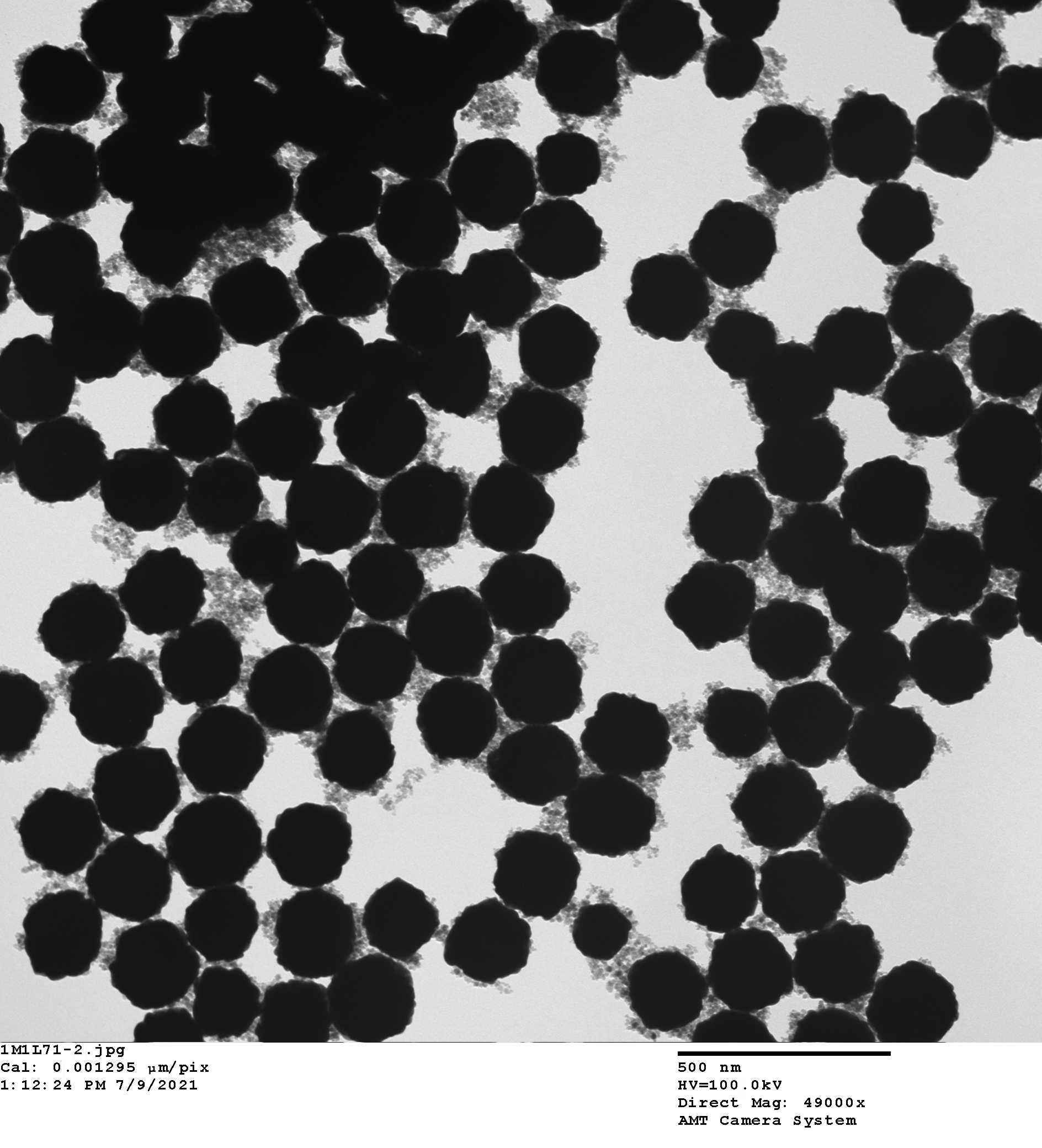All About Gold Coated Magnetic Nanoparticles
Definition, Properties and Applications
Gold-coated magnetic nanoparticles (Au@MNPs) are a class of nanoparticles that have garnered significant attention due to their multifunctional properties and potential applications in various fields, particularly in analytical chemistry and nanomedicine (Silva et al., 2016). These nanoparticles are typically coated with gold to enhance their biocompatibility and stability in physiological fluids, modify their surface for further functionalization, and alter the magnetic properties of the core nanoparticle favorably (Kolhatkar et al., 2013). The gold coating serves to protect the core from oxidation and corrosion, impart good biocompatibility, and facilitate surface modification through amine/thiol terminal groups (Wang et al., 2005). The unique properties of the core-shell structure, combining superparamagnetic iron oxide nanoparticles (SPIONs) as the core and a functional gold shell, have led to a wide range of biomedical applications, including magnetic resonance imaging (MRI), drug delivery, biosensors, and bio-separation (Sabale et al., 2017).
Gold-coated magnetic nanoparticles have also been found to possess advantageous characteristics such as inertness, non-toxicity, super magneticity, ease of detection in the human body, and catalytic surface, making them suitable for a variety of biological applications (Salehizadeh et al., 2012). Furthermore, the gold coating provides unique properties such as enhanced magnetic response, excellent stability, and protection of the magnetic core against oxidation, rendering them ideal candidates for biosensing applications (Luca et al., 2023). Additionally, the gold-coated magnetic nanoparticles have shown promise in environmental applications due to their multifunctional attributes and unique characteristics (Amos-Tautua et al., 2022).
In the biomedical field, gold-coated magnetic nanoparticles have been extensively utilized for various applications, including drug delivery, gene delivery, hyperthermic cancer treatment, and magnetic separation of nanoparticles (Park et al., 2010). The biocompatibility, stability, and ease of further functionalization of the gold-coated nanoparticles make them highly versatile for biomedical applications (Panday et al., 2020). The gold coating also enables the nanoparticles to be easily tuned in terms of size, shape, charge, surface functionalization, and coating thickness, thereby enhancing their optical and magnetic properties (Panday et al., 2020).
In summary, gold-coated magnetic nanoparticles exhibit multifunctional properties and have found applications in analytical chemistry, nanomedicine, biosensing, drug delivery, gene delivery, hyperthermic cancer treatment, and magnetic separation of nanoparticles. The gold coating enhances biocompatibility, stability, and surface modification capabilities, making these nanoparticles highly versatile for various biomedical and environmental applications.
Go here for Nanopartz Gold Coated Magnetic Nanoparticles
References:
Amos-Tautua, B., Markmanuel, D., Songca, S., & Oluwafemi, O. (2022). Textural thermo-gravimetric and magnetic properties of green synthesised water dispersible pristine and gold coated superparamagnetic iron oxide nanoparticles. Journal of Materials & Environmental Sustainability Research, 2(3), 1-11. https://doi.org/10.55455/jmesr.2022.006
Kolhatkar, A., Jamison, A., Litvinov, D., Willson, R., & Lee, T. (2013). Tuning the magnetic properties of nanoparticles. International Journal of Molecular Sciences, 14(8), 15977-16009. https://doi.org/10.3390/ijms140815977
Luca, M., Marra, D., Acunzo, A., Iannotti, V., Ventura, B., & Velotta, R. (2023). Fe3o4@au core satellite magnetic nanoparticles to enhance colorimetric immunosensor response.. https://doi.org/10.1117/12.2680212
Panday, R., Abdalla, A., Miao, Y., Li, X., Neupane, M., Ouyang, C., … & Yang, G. (2020). Polyethylenimine-coated gold-magnetic nanoparticles for adam10 sirna delivery in prostate cancer cells. Journal of Bioactive and Compatible Polymers, 35(6), 504-516. https://doi.org/10.1177/0883911520960507
Park, J., Bae, K., Kim, C., & Park, T. (2010). Clustered magnetite nanocrystals cross-linked with pei for efficient sirna delivery. Biomacromolecules, 12(2), 457-465. https://doi.org/10.1021/bm101244j
Sabale, S., Kandesar, P., Jadhav, V., Komorek, R., Motkuri, R., & Yu, X. (2017). Recent developments in the synthesis, properties, and biomedical applications of core/shell superparamagnetic iron oxide nanoparticles with gold. Biomaterials Science, 5(11), 2212-2225. https://doi.org/10.1039/c7bm00723j
Salehizadeh, H., Hekmatian, E., Sadeghi, M., & Kennedy, K. (2012). Synthesis and characterization of core-shell fe3o4-gold-chitosan nanostructure. Journal of Nanobiotechnology, 10(1), 3. https://doi.org/10.1186/1477-3155-10-3
Silva, S., Tavallaie, R., Sandiford, L., Tilley, R., & Gooding, J. (2016). Gold coated magnetic nanoparticles: from preparation to surface modification for analytical and biomedical applications. Chemical Communications, 52(48), 7528-7540. https://doi.org/10.1039/c6cc03225g
Wang, L., Luo, J., Fan, Q., Suzuki, M., Suzuki, I., Engelhard, M., … & Zhong, C. (2005). Monodispersed core−shell fe3o4@au nanoparticles. The Journal of Physical Chemistry B, 109(46), 21593-21601. https://doi.org/10.1021/jp0543429

